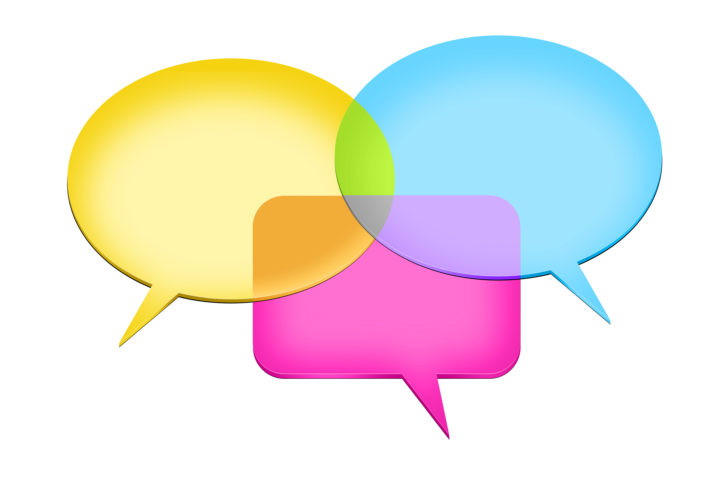
By now, most are familiar with our industry’s vernacular problem. Just look at the journey that the poor technology integrator (current parlance) has gone through: they’ve been called everything from “custom retailer” to the “custom installer” to just “installer” to the uber-offensive “tech guy” or the overly broad-based “integrator.” The struggle of what we call ourselves is real, but it has taught us the value of getting the nomenclature right in order to present a clearer picture. Remember the whole “media room” versus “home theater” debate, the one that still confuses homeowners who simply didn’t understand the difference? A rose is a rose, to be sure, but that is yet another example of what we call things getting in the way of meaningful communication.
So why am I bringing this up now? For one, CEDIA Expo is just around the corner. With an increased emphasis on trade collaboration, it’s clear we need to start focusing on how other trades define what we do and get ready to modify our vernacular, phrasing, even our tone, so that our industry garners the relevance, respect, and rewards it deserves.
Okay, great, but what does that mean, exactly? Here’s a great example. During a recent episode of Design Uncut, a show that I co-host with Modenus Media CEO Veronika Miller, we chatted with Chris Laumer-Giddens of Atlanta, GA-based architecture and design firm LG Squared. The conversation revolved around designing and building high-performance homes and what goes into them. As I listened, I realized that I was feeling increasingly uncomfortable because the deeper we got into the topic, the clearer it became that Chris’ definition of the high-performance home from a design-build perspective was vastly different from our definition of the same term from a residential tech integration standpoint. I was (and still am) fascinated that we could use the exact same phrase but mean completely different things. Not only does this create a vast chasm of misunderstanding, but factor in the strong likelihood that homeowners have yet another perception of what the term “high-performance home” might imply and you can see how messy things get, fast. It’s no wonder so many people look at us like we’ve got three heads when we talk about our industry!
It’s a classic case of you say pot-ay-to, I say pot-ah-to; only in this case, one potato is a monkey and the other is a bowling ball. But let’s not call the whole thing off.
As a communicator whose firm focuses on connecting the trades and creating more meaningful conversations, but who also works with brands in the “high-performance” space, I felt compelled to sort this one out immediately. I asked Chris to come back and discuss the concept of the high-performance home and what it means to the design-build community on my Connecting Tech + Design podcast (https://bit.ly/HighPerformanceHomesExplained). It was an eye-opening conversation.
From a technology integration perspective, when we talk about high performance, we’re talking about audio, video, home automation, and all the equipment that delivers a desired and often measurable result. There is typically a direct correlation between high performance and high price, so with it comes the perception of a certain lifestyle and persona. An audiophile, for example, might buy expensive tube amplifiers or tower speakers that will make his or her music perform at its absolute best. Home theater enthusiasts might end up spending tens of thousands of dollars on calibration to get the performance just right.
That’s quite a different notion than what Chris and the design-build trade believe high-performance home means. According to him, the definition is highly subjective. “High performance is related to green building and building science, but it is really about the process, not the materials,” says Chris. “It’s about creating something that is beautiful or performs really well. However, it’s the same contractor putting together that green building package doing the crown molding.”
According to Chris, everyone has a different perspective: “What I consider super high performance may be beyond what the average person would need. Another client might say they just need extra insulation and call that high performance. There is not a definition that says, ‘This is what high performance means.’ It’s about durability and craftsmanship.”
That subjectivity is important to ferret out in the interview phase. When a client comes to LG Squared and says they want a high-performance home, Chris asks them what that means to them. “Some say, ‘Oh I want it to be tight and energy efficient. I want super-heavy insulation and triple-paned windows.’ I ask them why they want those things. Sometimes it’s for health, sometimes it’s environmental consciousness. It all makes a difference how the house is designed.”
As for the cost associated with the term, Chris says that, in the design-build community, that association is often made but is not necessarily the case: “It’s an unfortunate connection, but we tell clients, ‘Don’t worry, we can still give you high performance without doubling the budget.’”
From the integrator’s perspective, during that upfront conversation with the homeowner, listening for the phrases being used is crucial, paying close attention to where their inspiration is coming from and then provoking the conversation a little more. As you begin to really listen to what the term means to your clientele, you can begin to couch it against what you present as your offerings and get the confusion out of the way early.
Obviously, “high-performance home” is just another example of why words matter. It’s really about defining what you say and making sure your audience is interpreting it correctly, then being able to morph that standard messaging into your company culture so that your team — all of your stakeholders — are fluent in all the different languages of your audience so your brand presence consistently portrays the right messaging to the right audience. In a nutshell, everyone in the company should talk to your audience using common words and phrases. Be sure to define specialty terms and limit the use of acronyms so that all who are presented with your material can easily understand it.
It’s not easy, that’s for sure, but there are resources available. KMB is here to help and happy to chat about your needs.
Original article was posted here: https://www.residentialsystems.com/features/secrets-of-success/you-say-pot-ay-to-i-say-pot-ah-to













 4. Site Optimization. Search Engine Optimization (SEO) can be overwhelming for small businesses and, sadly, many stay away from it altogether as they’ve had a bad experience in the past. However, there are now plenty of quality resources you can tap into — some that cater to the AV industry and others that are more broad-based or B2C-oriented. When you optimize your on-page SEO and your rankings steadily climb up in Google, you’ll see it’s well worth the effort. Every page on your site should be optimized for local SEO and for terms people actually use in common, everyday searches. Moz has
4. Site Optimization. Search Engine Optimization (SEO) can be overwhelming for small businesses and, sadly, many stay away from it altogether as they’ve had a bad experience in the past. However, there are now plenty of quality resources you can tap into — some that cater to the AV industry and others that are more broad-based or B2C-oriented. When you optimize your on-page SEO and your rankings steadily climb up in Google, you’ll see it’s well worth the effort. Every page on your site should be optimized for local SEO and for terms people actually use in common, everyday searches. Moz has